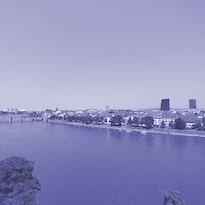Exploring metropolitan borderscapes
Social bridges in public spaces of transnational urban conglomerates
Abstract
This article deals with the interaction of three different elements: public space, cross-border metropolitan conglomerates and the concept of exploration (Pentland, 2014), profoundly linked to the idea of unfamiliarity comprehensively described by van der Velde et al. (2020). First, the idea of borderscapes is defined, and the social and spatial opportunities of the border are considered. Then, the concepts of idea-flow, exploration and unfamiliarity are described and considered from a sociological point of view, thanks to social physics and quantitative big-data studies. The action of exploration outside our daily spatial scope brings a series of benefits, both social and economic. These advantages are more relevant for the citizens with the lowest income, who generally do not profit of them. The particular case of borderscapes within transnational urban conglomerates is presented as a paradigmatic example (and magnifying glass) to understand the dynamics of exploring unfamiliarity in cities. From a spatial planning perspective, the possibilities of public areas within borderscapes is investigated as a field to get in contact with the unfamiliar. In order to enhance exploration rates in lower income groups, the urban necessary conditions are examined. These inform urban planners for spatial design practices that allow these vulnerable groups to improve socially.
Downloads

Downloads
Published
How to Cite
Issue
Section
License
Copyright (c) 2023 Arturo Romero Carnicero

This work is licensed under a Creative Commons Attribution 4.0 International License.
The authors keep their rights upon their work, although they transfer, in a non-exclusive way, the rights of exploitation (reproduction, publication, distribution, public dissemination and presentation) to the Journal. The authors are, therefore, free to enter additional, separate contracts for the non-exclusive distribution of the version of the work published in the Journal (for instance, by hosting in an institutional repository or publication in a book), provided credit is given that the work was initially published in this journal. The works are published under a Creative Commons Attribution 4.0 (CC BY 4.0) license.











